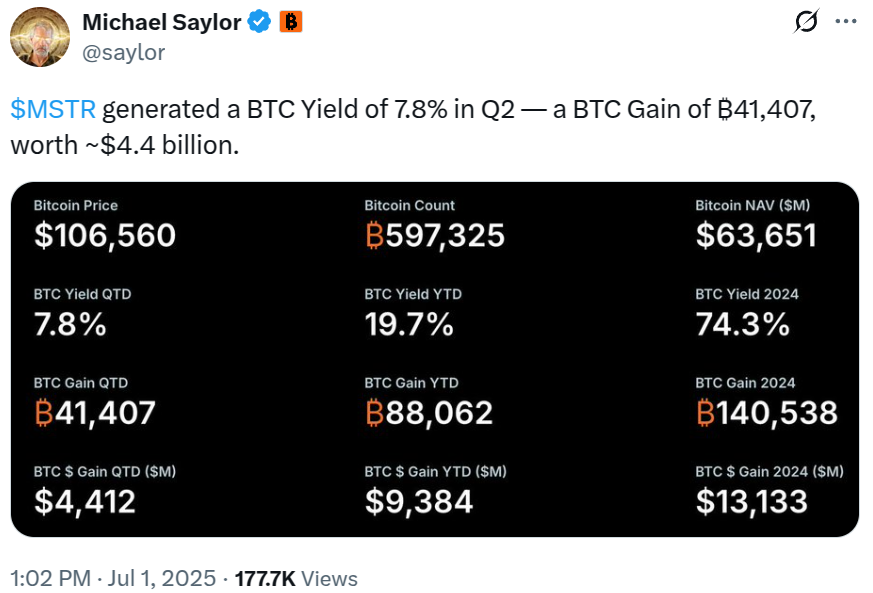
Strategy‘s Bitcoin Bonanza: A Billion-Dollar Question
Strategy, a firm synonymous with its massive Bitcoin (BTC) holdings, is on track to report staggering financial results for the second quarter of 2025. A Bloomberg analysis suggests the company is poised to announce over $13 billion in unrealized gains, a direct consequence of its significant exposure to the cryptocurrency market. This impressive figure, however, paints only a partial picture of the company’s performance, highlighting a growing divergence between its digital asset success and the performance of its core software business. This contrast raises critical questions about the long-term viability of Strategy’s strategy.
Unrealized Gains vs. Real-World Revenue
The projected $13 billion in unrealized gains are driven by the appreciation of Bitcoin, which Strategy has accumulated aggressively. As of March 31, 2025, the company held a staggering 528,185 BTC, a figure that has likely grown further with its continued buying sprees. These gains, though substantial on paper, are unrealized – meaning they represent potential profits that haven’t been converted into actual cash. This is in stark contrast to Strategy’s software business, which is projected to generate a comparatively modest $112.8 million in revenue during the same period. This disconnect raises concerns about the company’s fundamental operational health, even as its Bitcoin holdings flourish.
The Saylor Effect and Corporate Bitcoin Adoption
Strategy‘s chairman, Michael Saylor, has been a vocal proponent of Bitcoin, and the company’s strategy has served as a model for other corporations. The rising price of Bitcoin has encouraged more and more businesses to add BTC to their balance sheets. Data indicates that 250 businesses now hold Bitcoin. In June 2025 alone, 26 companies announced their own BTC treasury strategies, mimicking the success of Strategy. Saylor’s approach has undoubtedly influenced this trend, solidifying Bitcoin’s position in the corporate landscape, but the long-term sustainability of this strategy warrants careful examination.
Buying the Dip and the Source of Funds
Strategy’s commitment to accumulating Bitcoin remains unwavering. The company continues to make weekly purchases, even during market downturns. For instance, they purchased 4,980 Bitcoin in late June, with additional acquisitions announced earlier in the month. These purchases are financed through a combination of debt, equity, and preferred stock offerings. This approach has attracted both praise and criticism. Some analysts view it as “highly accretive,” while others warn of potential shareholder dilution. Moreover, Strategy acquired the tokens at an average price of $97,900 during the period, further solidifying its confidence in the cryptocurrency. Despite recent volatility, Strategy’s stock price has seen significant gains, soaring over 170% in the past year.
Looking Ahead: Sustainability and the Bitcoin Yield
While the current financial projections are impressive, the long-term sustainability of Strategy’s strategy remains a subject of debate. The company reports a Bitcoin yield of 7.8% for Q2, a metric measuring the percentage change in Bitcoin per assumed diluted share. This, along with weekly purchases and unrealized gains, shows that the firm is currently successful. However, the company’s future depends on the continued price appreciation of Bitcoin. The question remains: Can Strategy continue to thrive solely on its Bitcoin holdings, or will the sluggish performance of its core business eventually weigh it down? The market will be watching closely as Strategy navigates this complex financial landscape.



